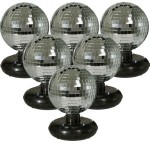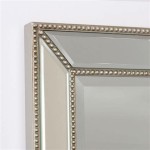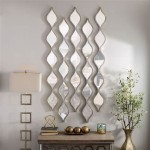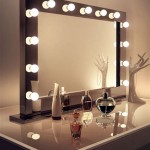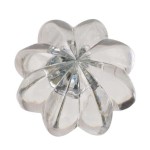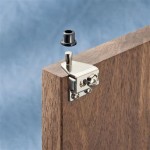Hanging Mirrors on Lath and Plaster Walls
Lath and plaster walls, a hallmark of older homes, present unique challenges when hanging heavy objects like mirrors. Their construction, consisting of thin wooden slats (laths) covered with a brittle plaster layer, requires careful consideration to ensure secure and damage-free mounting. Unlike drywall, lath and plaster doesn't offer consistent, solid backing, necessitating specific techniques and hardware choices.
Locating Wall Studs
Finding wall studs within lath and plaster walls is crucial for supporting substantial weight. Traditional stud finders can be inconsistent due to the uneven surface and varying density of the plaster. Tapping lightly along the wall, listening for a change in sound from hollow to solid, can help pinpoint stud locations. A small finishing nail can also be used to probe the wall gently, indicating the presence of a stud when resistance is met. Studs are typically spaced 16 inches apart, center to center.
Utilizing Wall Anchors
While securing directly to wall studs is the ideal scenario, it isn't always feasible due to mirror size or desired placement. Wall anchors provide a viable alternative for attaching mirrors to lath and plaster walls between studs. Several types are suitable:
- Toggle bolts: These provide a strong hold by expanding behind the wall. A pilot hole slightly larger than the toggle bolt is drilled, and the bolt is inserted with the wings folded. Once through the wall, the wings spring open, providing a secure anchor. Tightening the bolt draws the object flush against the wall.
- Molly bolts: These anchors also expand behind the wall but are generally better suited for lighter loads than toggle bolts. A pre-drilled hole, sized according to the anchor, is required. The bolt is inserted and tightened, expanding a sleeve against the back of the lath and securing the anchor.
- Plastic anchors: Suitable for lighter mirrors, plastic anchors are inserted into a pre-drilled hole and expand as a screw is driven in, gripping the lath and plaster. While convenient, they offer less holding power than toggle or molly bolts.
Reinforcing the Plaster
Aged lath and plaster is often brittle and prone to cracking or crumbling. Reinforcing the area where the mirror will hang can help prevent damage. Applying a thin layer of wood glue behind the mounting hardware or injecting construction adhesive into the wall cavity through small holes can help stabilize the plaster and distribute the weight more evenly.
Selecting Appropriate Hanging Hardware
The type of hanging hardware used depends on the mirror's size, weight, and mounting system. D-rings, wire, and keyhole slots are common options. Ensure the hardware is rated for the mirror's weight and complements the chosen anchoring method. Heavy-duty picture hangers designed for plaster walls are also available and offer a simpler installation for lighter mirrors.
Protecting the Plaster Surface
Before drilling into lath and plaster, placing a piece of masking tape over the drilling area helps prevent chipping and cracking. Using a sharp drill bit and applying gentle, even pressure while drilling is also crucial to minimize damage. Starting with a smaller pilot hole and gradually increasing the size as needed can further reduce the risk of plaster cracking.
Considering the Mirror's Weight and Size
The size and weight of the mirror significantly influence the hanging method and hardware required. Larger, heavier mirrors necessitate stronger anchors and potentially additional support. For particularly heavy mirrors, consider using multiple anchoring points to distribute the weight evenly. Consulting a professional installer is recommended for exceptionally large or heavy mirrors to ensure safe and secure mounting.
Assessing Wall Condition
Before attempting to hang a mirror, carefully assess the condition of the lath and plaster. Look for signs of deterioration, such as cracks, loose plaster, or crumbling areas. If the wall is significantly damaged, repairs may be necessary before hanging anything heavy. Consulting a plaster repair specialist is advisable in such situations to ensure the wall's structural integrity.

Hanging Heavy Mirror On Plaster Walls 6 Steps With Pictures Instructables
Hanging Heavy Framed Mirrors Lath Plaster Walls The Picture Framers Grumble
Hanging Heavy Framed Mirrors Lath Plaster Walls The Picture Framers Grumble

How To Hang A Heavy Mirror Or Picture She Holds Dearly

Hanging Heavy Mirror On Plaster Walls 6 Steps With Pictures Instructables

How To Hang A Heavy Mirror On Lath And Plaster Cohesive Homes
Hanging Heavy Framed Mirrors Lath Plaster Walls The Picture Framers Grumble

How To Hang A Heavy Mirror On Lath And Plaster Cohesive Homes
Hanging Heavy Framed Mirrors Lath Plaster Walls The Picture Framers Grumble

How To Hang Pictures On Plaster Walls 5 Secrets Avoid Wall Damage As Hanging

